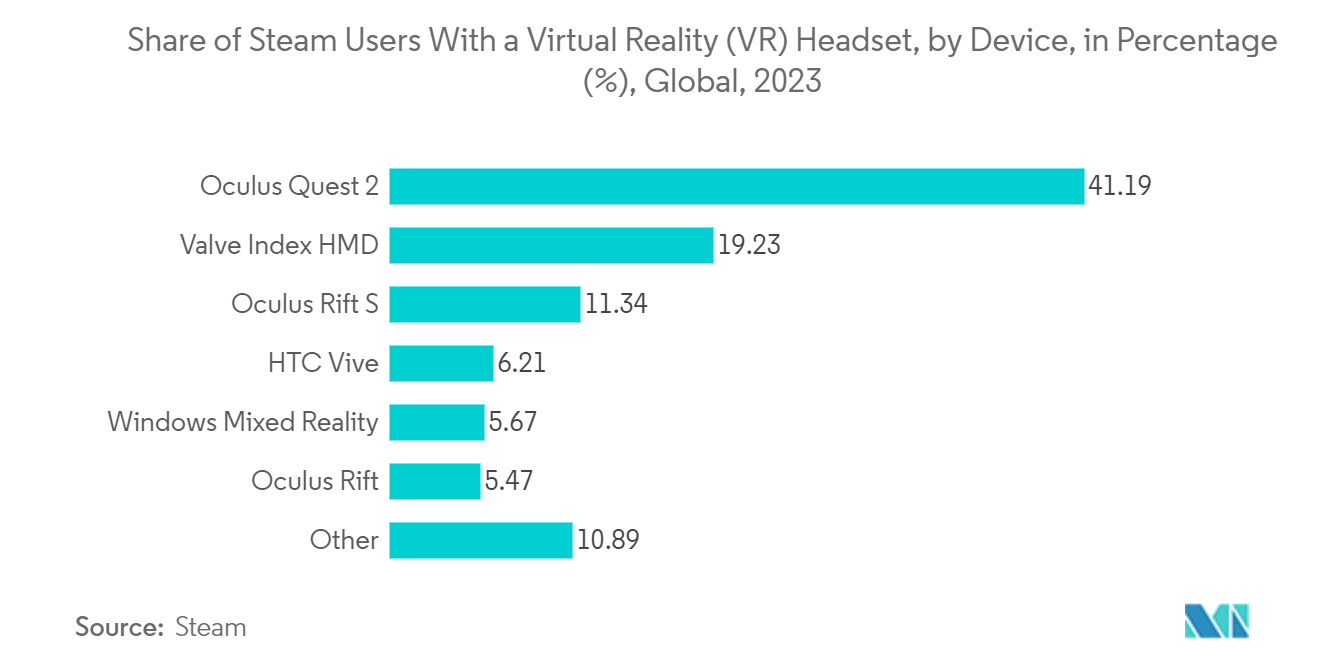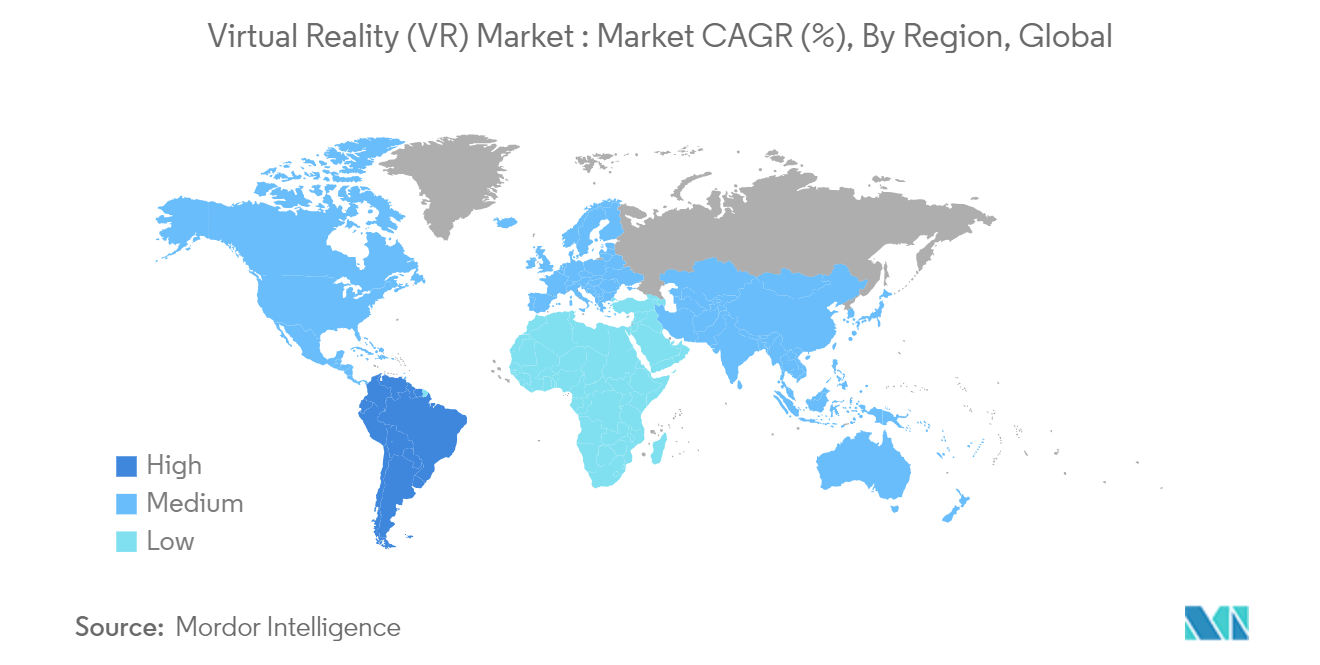Market Trends of Virtual Reality (VR) Industry
Gaming to be the Fastest Growing End-user Industry
- Rapid growth in AR and VR gamers worldwide has expanded the market's horizon. According to NewGenApps, a provider of artificial intelligence, machine learning, big data analytics, and AR/VR solutions, the global user base of AR and VR games will increase to 216 million users by 2025.
- Moreover, the increasing demand for video games creates an opportunity for vendors to offer VR headsets. According to the Entertainment Retailers Association, in 2022, British consumers spent approximately GBP 4.66 billion (USD 5.83 billion) on video games, a 2.3% increase from the previous year. Furthermore, in a survey conducted in September 2023, a significant number of Steam users stated that they use VR headsets, and over 41% of them use Oculus Quest 2 VR headsets.
- Strategic initiatives like partnerships, collaborations, and mergers and acquisitions give major market players a significant chance to expand their market presence. For instance, in October 2023, Yudiz Solutions, a leading digital transformation and game development company based in Ahmedabad, showcased its capabilities at the India Mobile Congress 2023 by unveiling a VR combat shooting game in partnership with leading telecom operator Vodafone India (Vi). 5G technology is used to power VR combat shooting games, and users can expect a low latency experience that allows them to be responsive and interactively immersed in virtual reality.
- In October 2022, Microsoft and Meta partnered to provide virtual reality experiences. This collaboration aims to bring Teams' and Microsoft's other productive tools to VR headsets, and Meta will get a partner in its grand metaverse plan. Microsoft and Meta are exploring ways to bring the Xbox Cloud gaming service to the store so gamers can play high-quality XBOX games on smartphones, tablets, computers, smart TVs, or any connected device through a Meta Quest system.
- The gaming industry recognizes the market potential of VR. As the technology becomes more accessible and affordable, the demand for VR gaming experiences is increasing. Game developers and publishers see VR as an opportunity to reach new audiences and create exciting, immersive experiences that stand out in a crowded market.

North America Holds Largest Market Share
- The demand for VR in North America has experienced rapid growth owing to the significant shift in individuals across various sectors engaging with technology. This increasing demand is fueled by the various applications of VR technology, from entertainment and gaming to education, healthcare, enterprise solutions, and others.
- The demand for VR is further propelled by technological advancements, making VR devices more accessible and user-friendly. The affordability and improved performance of VR headsets have contributed to broader adoption across North America, from tech enthusiasts to casual users seeking novel and engaging experiences. Hence, many companies are launching new products to increase their market share.
- Also, as VR becomes more accessible and easier to use, it offers a lot of great possibilities for the government to explore innovative approaches. Hence, the US government uses VR as a valuable tool across multiple sectors. For instance, in September 2023, the US Food and Drug Administration announced that VR could deliver some clinical services, normally delivered only in clinics and hospitals, to patients in their homes or other non-clinical settings.
- Moreover, by the end-user industry, the education sector is expected to grow significantly during the forecast period. North American educational institutions are integrating VR into their curricula to provide students with hands-on, experiential learning opportunities. Virtual field trips, simulations, and interactive lessons enhance the learning experience, making complex concepts more accessible and fostering a deeper understanding of various subjects.
- These factors indicate the growing demand for VR. As VR evolves and becomes more accessible, various industries will shape how individuals and industries interact with the digital era. The trajectory of VR adoption in North America suggests a future where immersive experiences become an integral part of everyday life. Hence, the above-mentioned factors will boost the growth of the market studied in the future.


